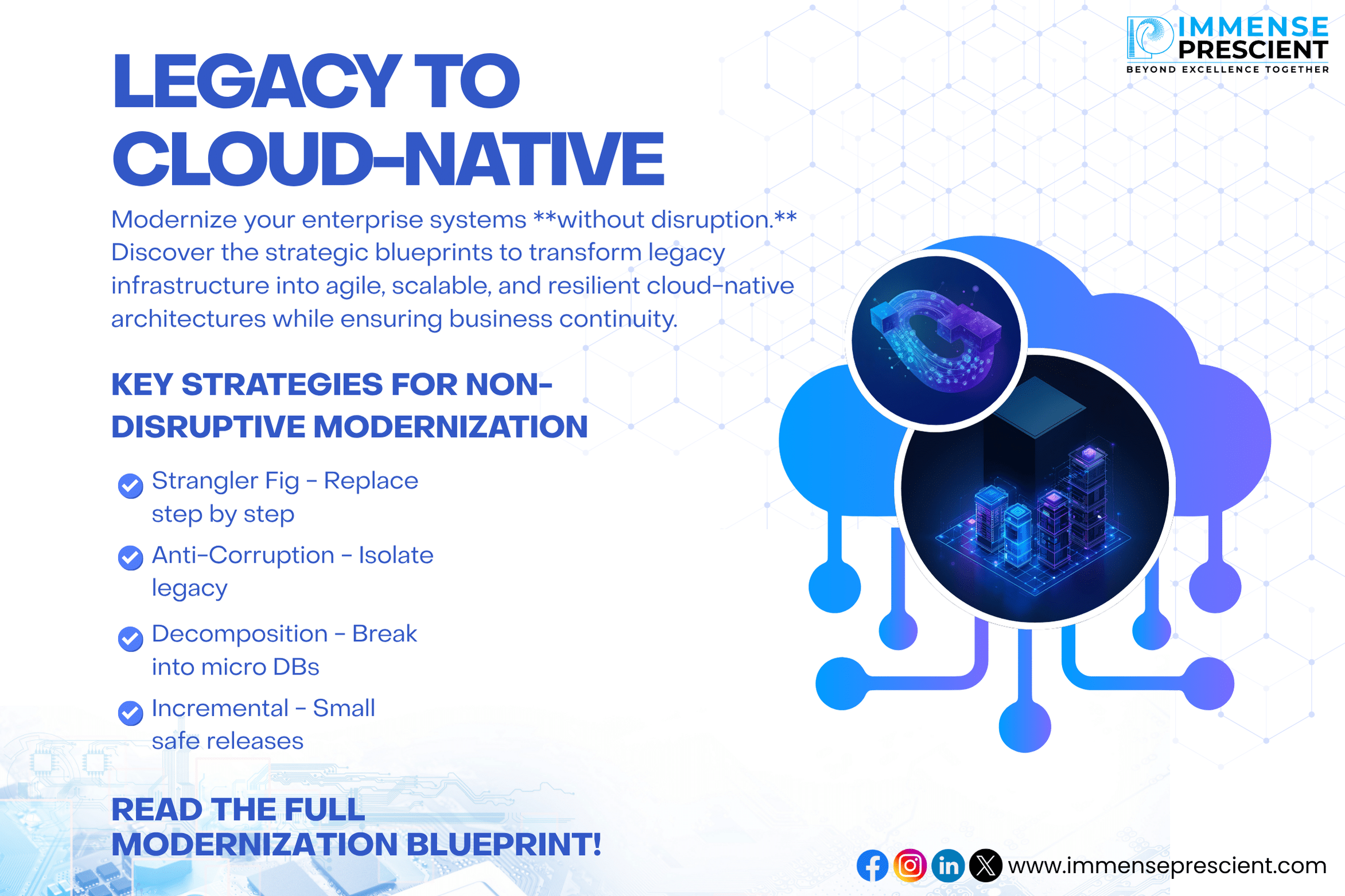From Legacy to Cloud-Native: How Enterprises Can Modernize Without Disruption
Introduction: enterprise application modernization
Enterprises today are under mounting pressure to innovate, scale, and stay competitive. Yet many organizations remain dependent on legacy systems outdated technologies that slow down agility, increase costs, and limit growth. Modernizing these applications into cloud-native architectures is no longer optional; it’s a strategic necessity. The challenge, however, lies in doing so without disrupting business operations.
Why Legacy Systems Hold Enterprises Back
Legacy infrastructure often:
- Creates integration challenges with modern tools and platforms.
- Demands high maintenance and operational costs.
- Slows innovation due to outdated architecture.
- Introduces security vulnerabilities.
This is why enterprise application modernization has become central to digital transformation initiatives.
The Cloud-Native Advantage
Migrating to cloud-native systems offers clear benefits:
- Scalability: Rapidly adapt to business growth and fluctuating demand.
- Resilience: Enhanced uptime and disaster recovery.
- Cost-efficiency: Pay-as-you-go models reduce CAPEX.
- Agility: Faster release cycles and improved customer experiences.
Cloud-native systems enable enterprises to innovate continuously without being shackled by outdated technology.
Modernization Strategies Without Disruption
- Assess and Prioritize Applications
Not every system needs to move immediately. Start with applications that deliver the most business value when modernized. - Adopt a Hybrid or Phased Approach
A gradual migration strategy ensures continuity. Hybrid models allow enterprises to leverage both legacy and cloud systems during transition. - Leverage Containers and Microservices
Technologies like Docker and Kubernetes enable modular modernization, breaking down monolithic apps into manageable, scalable components. - Ensure Robust Security & Compliance
Cloud-native doesn’t mean compromising compliance. Implement strong security practices to protect sensitive data. - Engage Expert Partners
Partnering with digital transformation consulting firms like Immense Prescient ensures smooth, disruption-free modernization.
Common Challenges and How to Overcome Them
- Downtime Risks: Use phased rollouts and blue-green deployments.
- Skill Gaps: Upskill teams in cloud-native technologies.
- Resistance to Change: Foster a culture of innovation and continuous learning.
Real-World Example: Netflix’s Modernization Journey
Netflix famously transitioned from monolithic, on-premise systems to cloud-native architecture on AWS. By using a phased approach, it minimized disruption while enhancing scalability, resilience, and customer experience.
Conclusion: Building Future-Ready Enterprises
Modernizing from legacy to cloud-native is not just about technology—it’s about enabling future-ready enterprises that can thrive in a rapidly evolving digital world. By using phased migration, hybrid strategies, and cloud-native tools, enterprises can modernize seamlessly while minimizing disruption.




